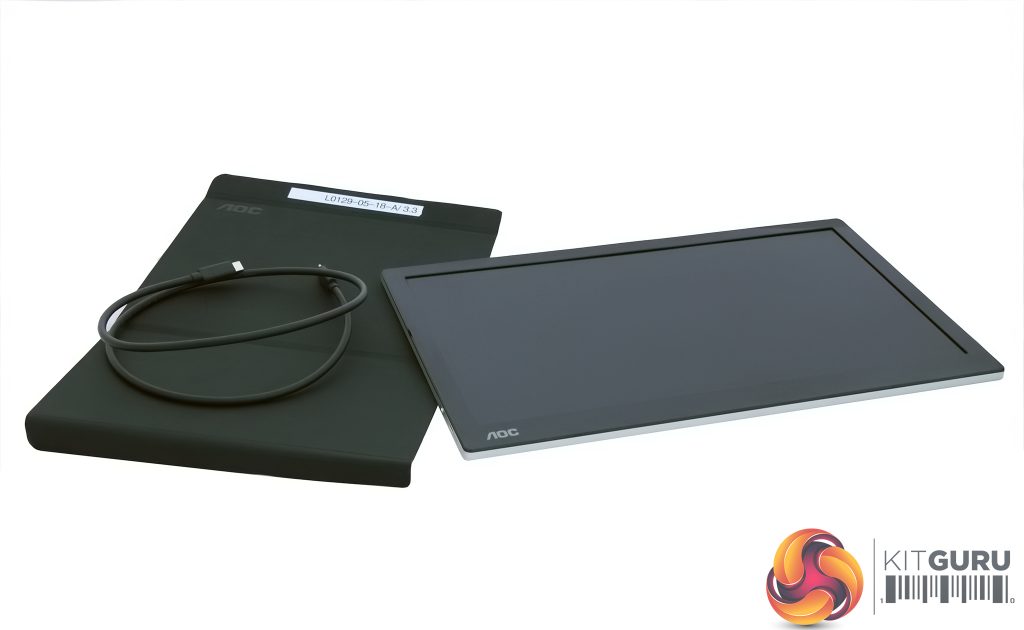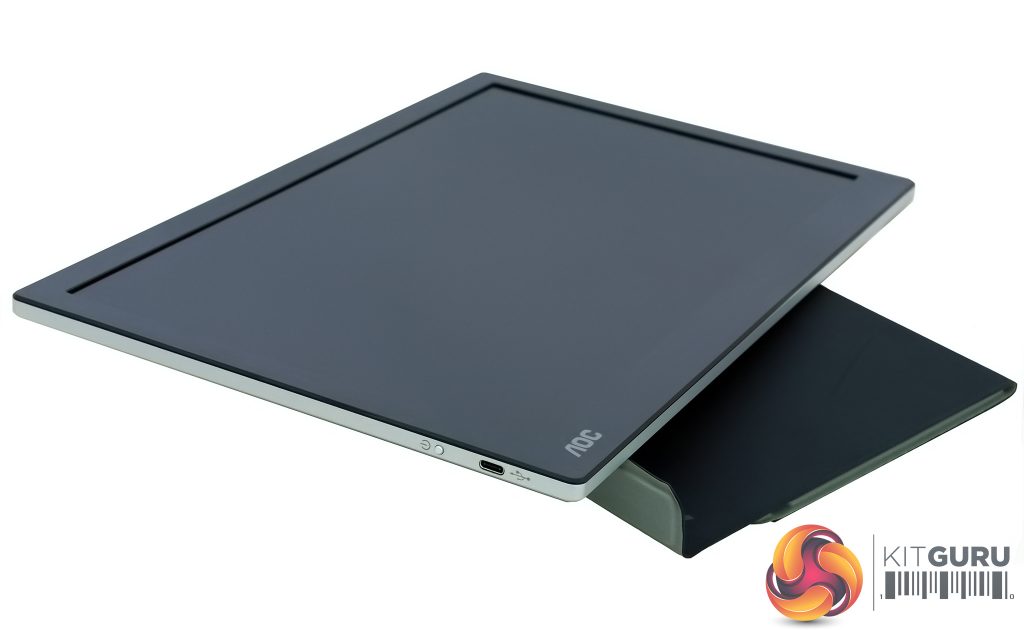AOC I1601FWUX Connectivity
Like it's setup, the I1601FWUX’s connectivity is simple and straightforward – or at least, with only a single USB Type-C port, there’s little potential for confusion on the monitor’s side of things. Unfortunately, the same can’t be said for the source device's end.
As already mentioned in our introduction, AOC’s latest requires a USB Type-C port which supports DisplayPort via Alternative Mode (AKA DP Alt Mode), which is not yet as common as one might think. This is because – even amongst the elite that have it – USB Type-C merely defines the shape of the physical connector, behind which can hide several generations of USB with or without video support; and indeed till recently some high-end laptops still only supported Type-C with USB 2.0, meaning any Type-C portable monitor wouldn't display a signal with the best will in the world.

However, it is a pretty safe bet that most premium laptops regardless of your OS of choice will meet this requirement now, with popular examples including Microsoft’s Surface Book 2 line for Windows and Google’s PixelBook for Chrome OS. Provided your source device is compatible then, it’s as simple as plugging in the single cable which carries both power and data, and, bingo, you have a portable multi-monitor setup.
Do take care not to misplace the included cable though. Just like there are many different potential connection standards hiding behind the USB Type-C physical interface, there are different types of Type-C to Type-C cable, and not all of them support DP Alt Mode either.
If you do need a replacement, make sure to get a cable that states it’s Super High Speed USB 3.1 or better. It would have been a really nice touch if AOC had provided a Type A 3.1 adapter with DisplayLink capability, as Asus did for its ASUS ZenScreen MB16AC, but alas that’s not the case here.

AOC I1601FWUX Control and OSD
We’ll come right out and say it: the AOC I1601FWUX has the single most limited control scheme we have ever come across, and we’ve seen a few. This is because everything – power and navigation and selection – is controlled by a single button.
Pressing this button brings up to OSD strip, which contains icons for Brightness, Contrast, Overdrive, Low Blue Light (or LowBlue as AOC calls it), Language and… Exit. All fairly self-explanatory, though in case you haven’t come across them before, Overdrive adjusts the pixel response time, while Low Blue Light reduces the potentially harmful ‘blue light’ frequency that is emitted by most LED-backlit displays. It would have been nice to see some colour adjustments and/or presets, but given how finicky the I1601FWUX is to navigate, perhaps their omission is a blessing in disguise.

To cycle between icons, keep pressing the aforementioned button. In order to select one, you have to wait for a few seconds on the relevant icon. Adjusting parameters like brightness can also be a little awkward: once you’ve managed to enter the brightness adjustment ‘menu’ you have to keep the button pressed to increase the setting, and if you overshoot, you need to keep increasing past maximum to cycle from zero again. And you had better not hesitate, as menus disappear quite quickly and you can’t alter the OSD time-out.
Last and least of this button’s myriad functions is that if you press and hold for a few seconds, it will turn the display off. It would have been quite nice if AOC had added an extra button or two and some more options to physically tune its portable display.
Thankfully, as we’ll see in a moment, the company does provide an alternative way to change its portable monitor’s settings through software. Unfortunately, this solution is also not without its issues so your mileage may vary.
Be sure to check out our sponsors store EKWB here
 KitGuru KitGuru.net – Tech News | Hardware News | Hardware Reviews | IOS | Mobile | Gaming | Graphics Cards
KitGuru KitGuru.net – Tech News | Hardware News | Hardware Reviews | IOS | Mobile | Gaming | Graphics Cards


